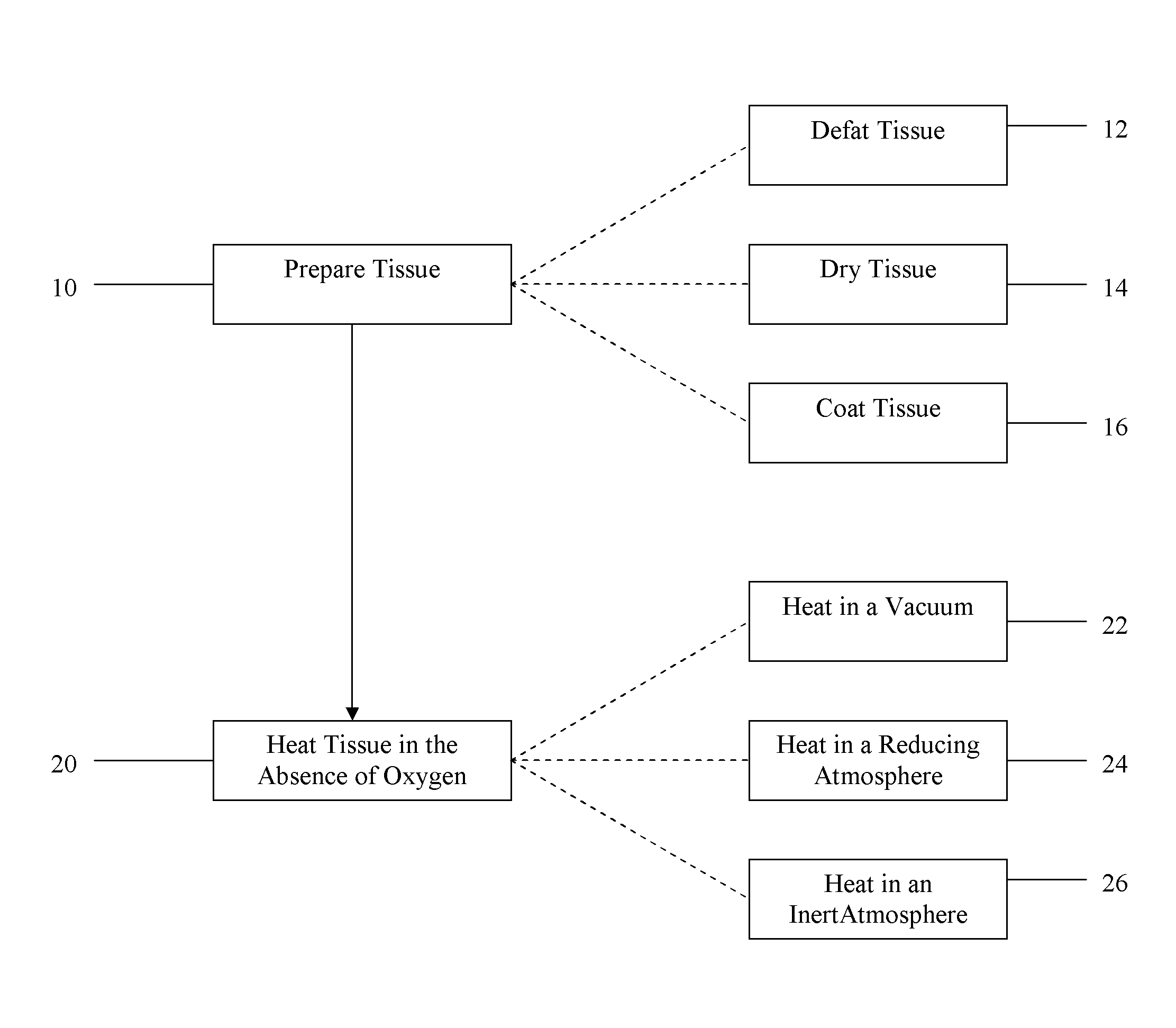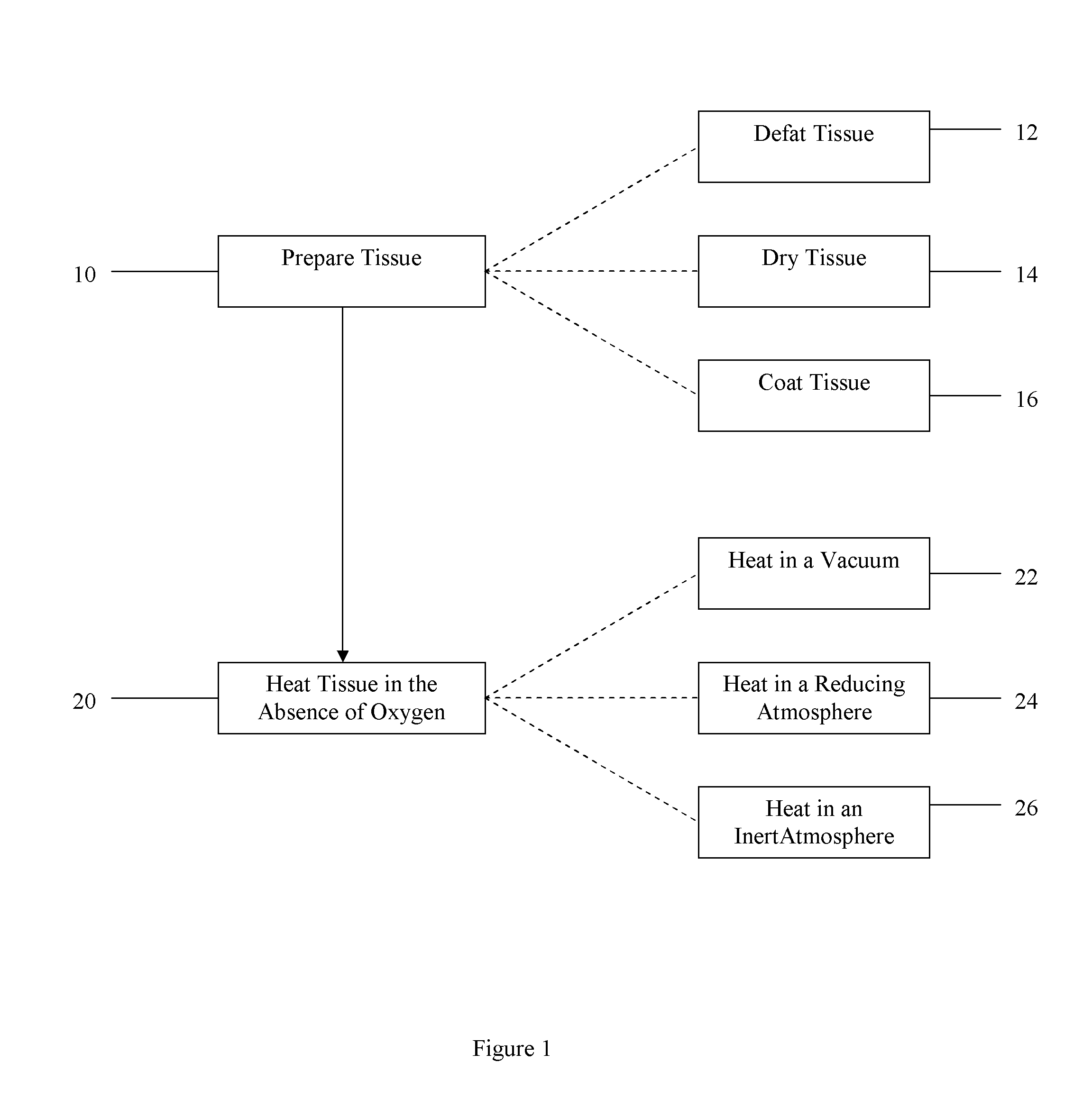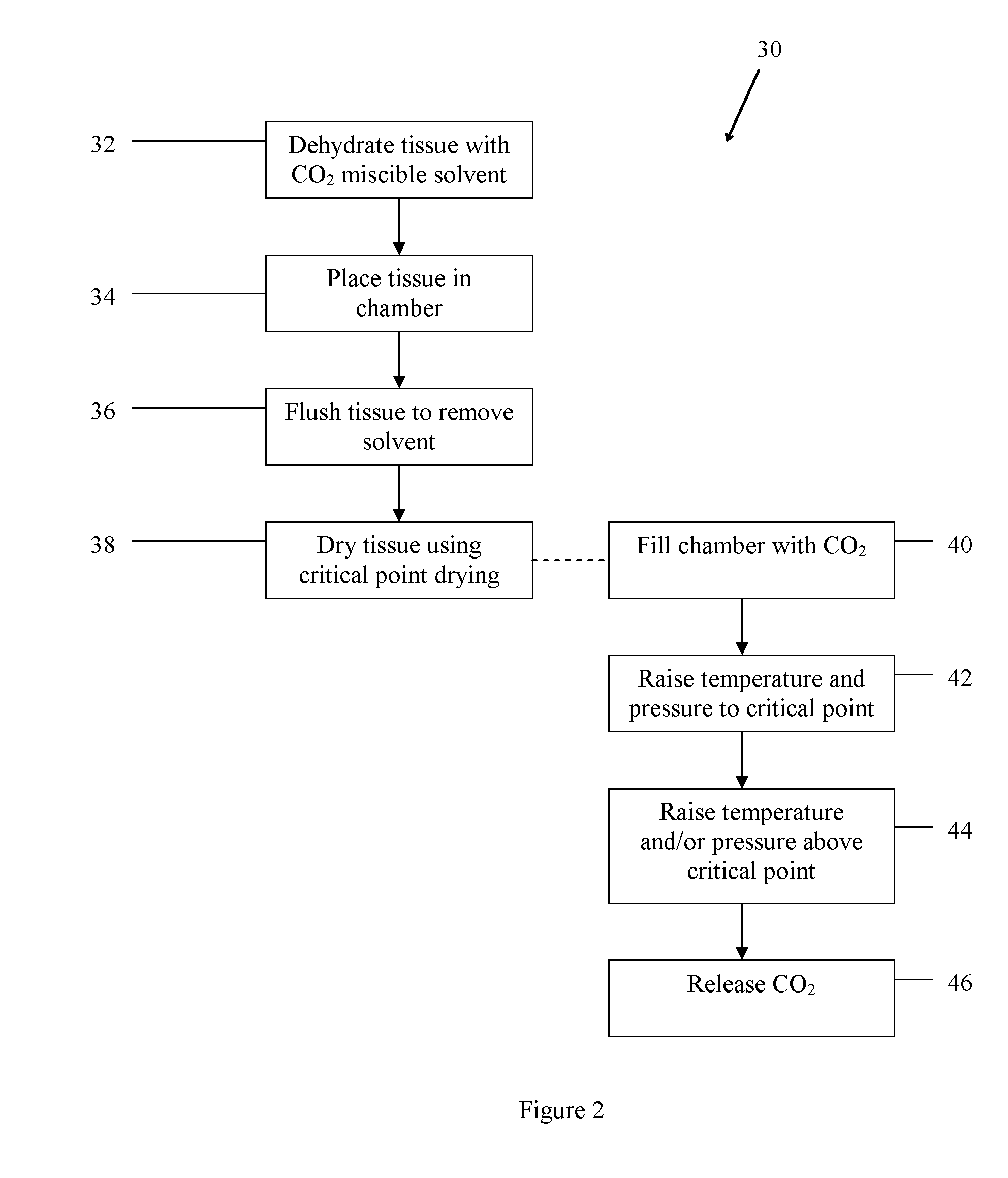Method of treating tissue
a tissue and treatment method technology, applied in the field of tissue treatment, can solve the problems of limiting the potential inflammatory response, damaging traditional methods of heating or autoclaving, and not being able to achieve satisfactory sterilization methods of bone, so as to promote remodeling and replacement
- Summary
- Abstract
- Description
- Claims
- Application Information
AI Technical Summary
Benefits of technology
Problems solved by technology
Method used
Image
Examples
example 1
Bone Particles in a Polymer
[0119]Bone / polymer osteoimplants were prepared using rabbit bone and a poly DTE polymer.
[0120]Bone Preparation
[0121]Rabbit femurs were harvested and stored frozen at −60° F. or below. The femurs were thawed in two separate 30 minute soaks in sterile water. After thawing, the femurs were scraped of tissue and coarse ground in a Tekmar mill. Following grinding, the femurs were soaked in sterile 70% ethanol for approximately 45 minutes to an hour, rinsed with sterile water, packaged in Tyvek bags, and frozen. The frozen bone was lyophilized in a Virtus freeze dryer and sealed in foil pouches until use.
[0122]Polymer Preparation
[0123]PolyDTE polymer was obtained from Integra LifeSciences Holdings Corporation (Plainsboro N.J.). It was packaged in foil pouches until use.
[0124]Polymer / Bone Mixing
[0125]Approximately 6.57 grams of cleaned and freeze dried rabbit bone, produced as previously described, was combined with approximately 2.19 grams of the DTE polymer and...
example 2
Bone Struts in Hot Supercritical CO2
[0130]Six groups of three bovine cortical bone struts were cut from three bovine femurs. Each strut measured 40 mm long with a 4×4 mm cross-section. One strut from each group was kept as a control and lyophilized with no further treatment. One strut from each group was treated in supercritical CO2 at 80° C. (176° F.) for 10 minutes. The remaining strut from each group was treated in supercritical CO2 at 120° C. (249° F.) for 10 minutes. Prior to heating the bone, the chamber was purged with CO2 gas to remove all air. At the end of the heating cycle, the CO2 was released slowly to prevent bone damage as the supercritical CO2 decompressed and escaped from the bone. After treatment, the control and treated struts were lyophilized and sealed in air tight foil pouches until mechanical testing was carried out.
[0131]Prior to mechanical testing, the samples were opened from their respective foil-foil pouches and placed in individual 20 ml plastic tube wi...
example 3
Bone Preparation
[0134]Rabbit legs were thawed in antiobiotic solution (4 liters DI water+50,000 units of Polymixin B and 50,000 units of Bacitracin) for 1 hour. While in the solution, all soft tissue was scraped from the bones. The proximal and distal ends of the femoral shafts were cut off with a band saw, and the marrow was rinsed from the shafts using tap water. The shafts were soaked in sterile water followed by 1 hour sonication in 70% ethanol.
[0135]After clamping in a vise, the shafts were milled to fibers using a straight fluted milling bit with an engagement depth of 0.015 inches and an engagement length of 4 to 5 mm. After collection, the fibers were rinsed with sterile water and sonicated for 30 minutes in 70% ethanol, followed by collection on a 100 micron sieve, and a sterile water rinse. The fibers were defatted by two 30 minute treatments in an ultrasonic ethanol bath.
[0136]The fibers were prepared for freeze drying by spreading a thin layer of fibers on a stainless st...
PUM
| Property | Measurement | Unit |
|---|---|---|
| Temperature | aaaaa | aaaaa |
| Temperature | aaaaa | aaaaa |
| Pressure | aaaaa | aaaaa |
Abstract
Description
Claims
Application Information
 Login to View More
Login to View More - R&D
- Intellectual Property
- Life Sciences
- Materials
- Tech Scout
- Unparalleled Data Quality
- Higher Quality Content
- 60% Fewer Hallucinations
Browse by: Latest US Patents, China's latest patents, Technical Efficacy Thesaurus, Application Domain, Technology Topic, Popular Technical Reports.
© 2025 PatSnap. All rights reserved.Legal|Privacy policy|Modern Slavery Act Transparency Statement|Sitemap|About US| Contact US: help@patsnap.com



